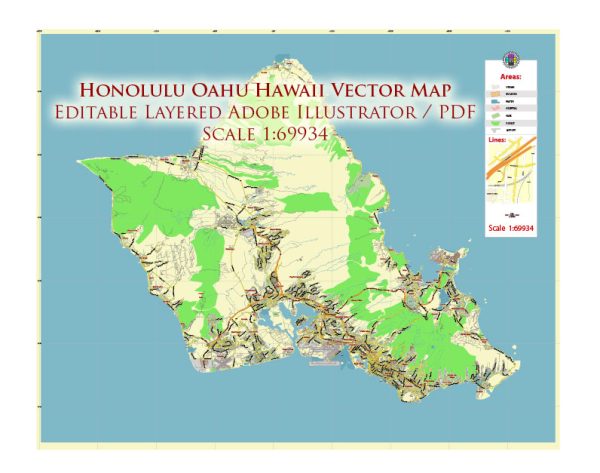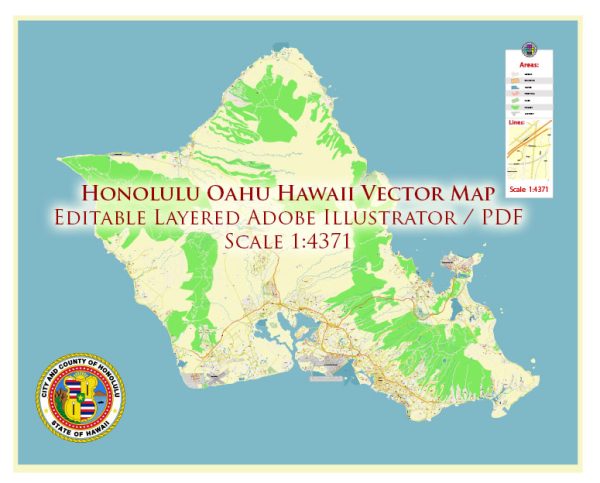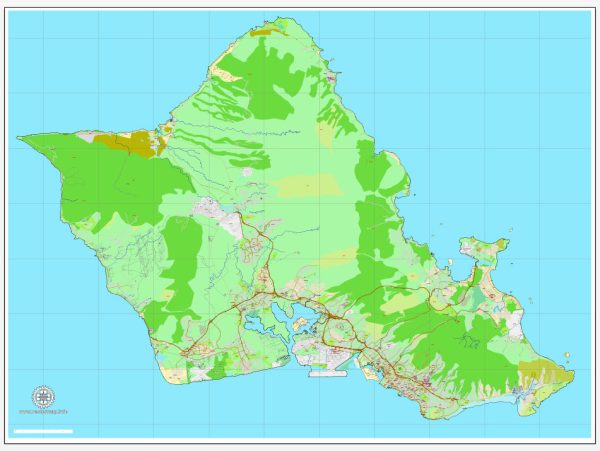Honolulu, located on the island of Oahu in Hawaii, has a rich history of urban development that spans centuries. The story of Honolulu’s growth reflects the broader historical and cultural changes in Hawaii, from its early days as a native Hawaiian settlement to its development as a major Pacific city influenced by Western powers.
- Ancient Hawaiian Settlements (Pre-18th Century): Before the arrival of Europeans, Oahu was home to native Hawaiians. The area now known as Honolulu was initially a small fishing village called Kou. Hawaiians lived sustainably, relying on fishing, taro cultivation, and other agricultural practices. The natural harbor of Honolulu, known as Kou Harbor, played a role in the early development of the area.
- European Contact and Influence (Late 18th Century): Captain James Cook’s arrival in the Hawaiian Islands in 1778 marked the beginning of European contact. With the introduction of Western diseases and the arrival of missionaries in the 19th century, the native Hawaiian population declined. Honolulu, with its harbor, began to attract Western traders and settlers.
- The Establishment of Honolulu as the Capital (19th Century): In 1845, King Kamehameha III moved the capital of the Kingdom of Hawaii from Lahaina on Maui to Honolulu. This decision was influenced by the deep-water harbor and the increasing importance of trade and commerce. The city began to grow as it became the political, economic, and cultural center of the Hawaiian Kingdom.
- Sugar Industry Boom (Late 19th Century): The late 19th century saw a significant economic shift with the rise of the sugar industry. Plantations on Oahu, including those in the surrounding areas of Honolulu, fueled economic growth. Immigrants from Asia, particularly Japan, China, and the Philippines, came to work on the plantations, contributing to the multicultural makeup of Honolulu.
- Pearl Harbor and Military Presence (20th Century): The establishment of Pearl Harbor as a U.S. naval base in the early 20th century brought a military presence that shaped Honolulu’s development. The city experienced significant growth during World War II, with an influx of military personnel and the construction of military infrastructure.
- Statehood and Modern Development (20th Century): Hawaii became the 50th U.S. state in 1959, and Honolulu continued to grow as a major Pacific city. Urban development expanded with the construction of high-rise buildings, hotels, and infrastructure to support tourism, which became a vital part of the local economy.
- Contemporary Urban Challenges and Planning: In recent decades, Honolulu has faced challenges related to urban development, including traffic congestion, affordable housing shortages, and environmental concerns. Efforts have been made to address these issues through urban planning initiatives, public transportation improvements, and sustainable development practices.
Today, Honolulu stands as a vibrant and diverse city, blending its rich cultural heritage with modern influences. The city’s urban development reflects its unique history as a crossroads of indigenous Hawaiian, Asian, and Western cultures.




 Author: Kirill Shrayber, Ph.D.
Author: Kirill Shrayber, Ph.D.